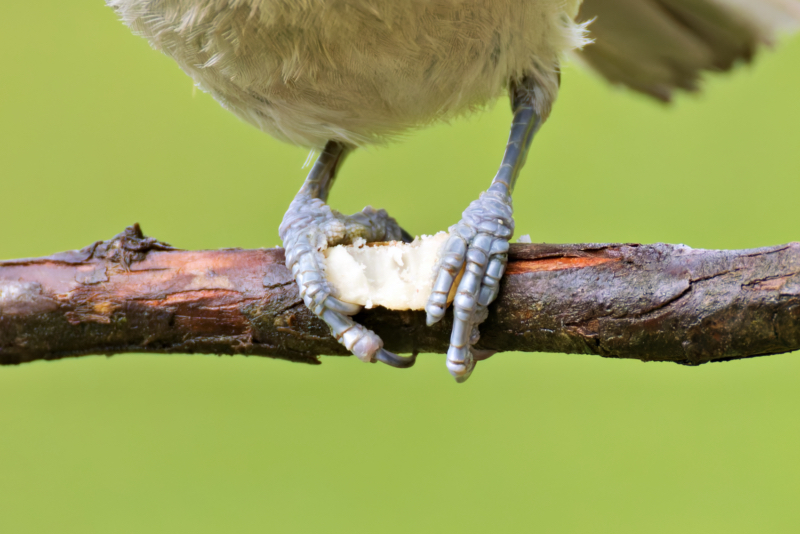The Tufted Titmouse feeding behavior involves using both feet like tiny hands. This bird gripped the sunflower seed firmly with both feet pressed against the branch. The dual grip keeps the seed perfectly stable.

Most small songbirds cannot do this. Cardinals and finches hold seeds in their beaks only. However, the Tufted Titmouse has stronger feet and better coordination.
The bird turned the seed several times to find the best angle. Then it started hammering with its sharp beak. Each strike was precise and controlled.
Why This Feeding Method Works So Well
This grip-and-hammer technique helps Tufted Titmouse birds access high-energy foods. Sunflower seeds contain oils and proteins that fuel their active lifestyle.
The two-foot grip keeps the seed completely stable. This lets the bird put more force into each peck. Additionally, the bird can rotate the seed to work on different spots.
I have photographed this behavior many times at my Arkansas feeders. The process usually takes 30 to 60 seconds per seed. For comparison, I captured this same feeding technique from farther away in my earlier post about Tufted Titmouse cracking sunflower seeds. This time I wanted to show the grip detail up close.
Best Times to Observe This Behavior
Early morning offers the best chances to see Tufted Titmouse feeding behavior. The birds are hungry after a long night and are less cautious about approaching feeders.
I shoot from my deck to observe Tufted Titmouse feeding behavior. The feeder sits about 15 feet away from my position. The birds quickly get used to my presence there. They will often perform this seed-cracking routine on the nearby cedar branches.
Winter months provide the most opportunities. Seeds become a crucial food source when insects are scarce.
